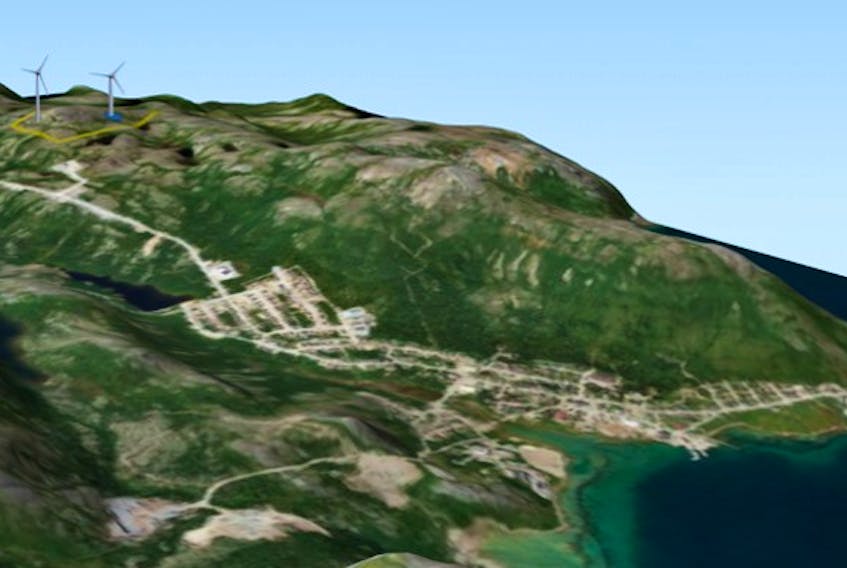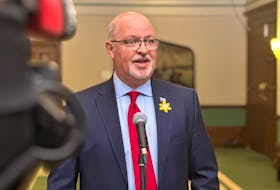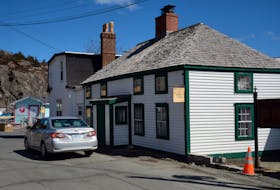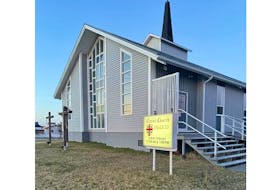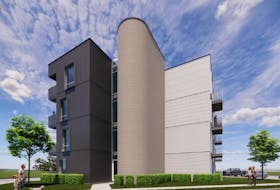NAIN, N.L. — A proposed state-of-the-art wind power project could reduce more than one-third of the diesel consumed by the town of Nain.
Nain, like every community on the northern Labrador coast, isn’t connected to the electrical grid, and the 1,100 residents rely on diesel for power. Most recent figures from Newfoundland and Labrador Hydro, from 2018, indicate the community consumes approximately 2.7 million litres annually, about 2,250 litres per person, excluding diesel burned for home heating.
A wind-powered micro-grid project now in the engineering phase isn’t the first renewable energy project in the region, but when it’s complete it will be the one with the most impact.
The project is a partnership between the Nunatsiavut Government (NG) and Natural Forces, an independent power producer based in Nova Scotia, and if everything goes right it will be up and running by the summer of 2022.
Nunatsiavut Government regional energy co-ordinator Nick Mercer said it’s the first project of this scale not only in Nunatsiavut, but it’s the first renewable energy-powered micro-grid of this scale happening anywhere within the Canadian Arctic.

“This is an ambitious project," he said. "It’s not meant to cut back five to 10 per cent of the diesel in the community. It’s a large-scale project which is supposed to make a significant dent in the amount of fuel that’s being consumed in Nain.”
Mercer said some of the early projections he read have suggested this project will likely displace anywhere between 35 to 50 per cent of the diesel that’s consumed in Nain annually, or about a million litres. All remote communities throughout Newfoundland and Labrador consume about 20 million litres of fuel annually.
The project would see wind turbines producing 1.8 to 2.3 megawatts of wind energy capacity installed on a hill near Nain, connected to an energy storage system, which Mercer said would most likely be lithium-ion batteries. When the wind dies down the spare battery capacity would hold the community over until the diesel system kicks back in.
“Wind doesn’t always blow, sun doesn’t always shine, you can integrate those technologies into an isolated system to the degree of 10 to 20 per cent, but if you want to get really ambitious, get up to the 30, 40, 50 per cent of intermittent renewable energy penetration, you need to make substantial investments in things like system control and energy storage,” he said. “That’s what this project hopes to do, a truly state-of-the-art project in a northern context.”

Natural Forces, the company helping develop the project with the Nunatsiavut Government, said it works with local community groups and Indigenous communities to develop renewable energy projects from coast to coast to coast and has worked in Labrador before, on the solar/diesel system being developed in Mary’s Harbour.
Natural Forces also said it has seen more appetite for renewable energy projects from northern communities and governments in recent years.
“We have seen a large increase in not only interest but also investments being made to begin exploring the opportunities for renewable energy projects in northern communities,” the company said in an emailed response.
The federal government, which is providing funding for the project through the clean energy for rural and remote communities program, has committed to getting remote Indigenous communities off diesel by 2030. Mercer said projects like this could help make that ambitious goal a reality.
The partners are doing an engineering study to figure out all the technical and economic components to ensure this is a viable project, Mercer said. After that, in the best-case scenario, construction would start this summer and end the following year.
He said they hope the Nain project serves as a demonstration project and proves this can be done.
“It can be done in a cost-effective way, in a safe, reliable way, in a way that can maintain community support,” he said. “We want to be a trailblazer in this regard, and we think this can prove to others this technology can be done.”
Evan Careen is a Local Journalism Initiative reporter covering Labrador for SaltWire Network.

